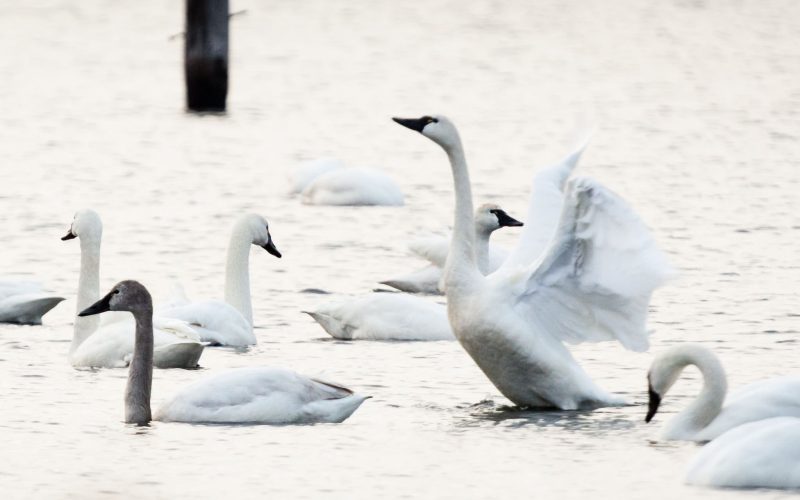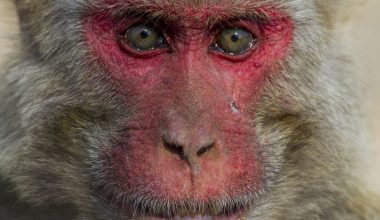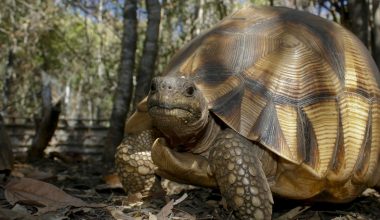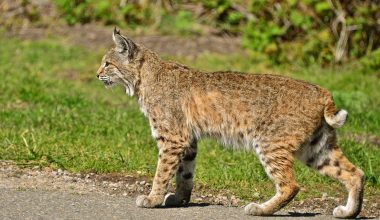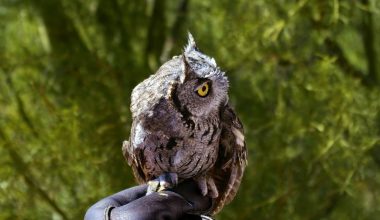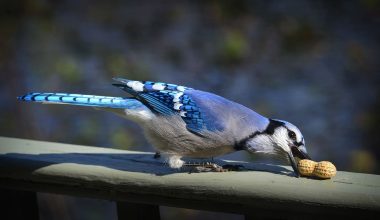Many people can identify a bird when they see one with the help of feathers, wings, and a bill. Birds are warm-blooded and lay hard-shelled eggs mostly in nests. Birds are also known for different color combinations, Here is the list of the 16 most beautiful white birds in the world,
White Birds In The World
1. Rock ptarmigan
Rock ptarmigan is a common farm animal that belongs to the grouse family. They are seen in the regions of Alaska, Canada, Iceland, Greenland, Scandinavia, and Russia (areas near the Arctic Circle) and hence listed as common animals of the polar regions. The bird species can range between 12 to 16 inches in length and the average weight is between 15.5 to 22.6 ounces.
The natural enemies of Rock ptarmigan are arctic foxes, ermines, arctic skuas, glaucous gulls, golden eagles, and snowy owls. The primary diet consists of leaves, buds, berries, twigs, and flowers. The young ones primarily eat insects. The avarage lifespan of rock ptarmigan is between 3 to 4 years in the wild.

Image Source: Alaska Region U.S. Fish & Wildlife Service
2. American white pelican
American white pelicans are black and white bird breeds in some parts of inland Canada, as well as the northern United States, from Ontario to British Columbia, and from California to Minnesota. The bird species migrate annually along the Gulf of Mexico and in Mexico. The juvenile species only migrate during the first year to the winter region and will start the annual migration once they are 2 years old. The primary diet includes fish and sometimes they eat salamanders and crustaceans. The avarage lifespan of the American white pelican is between 12 to 30 years in the wild.
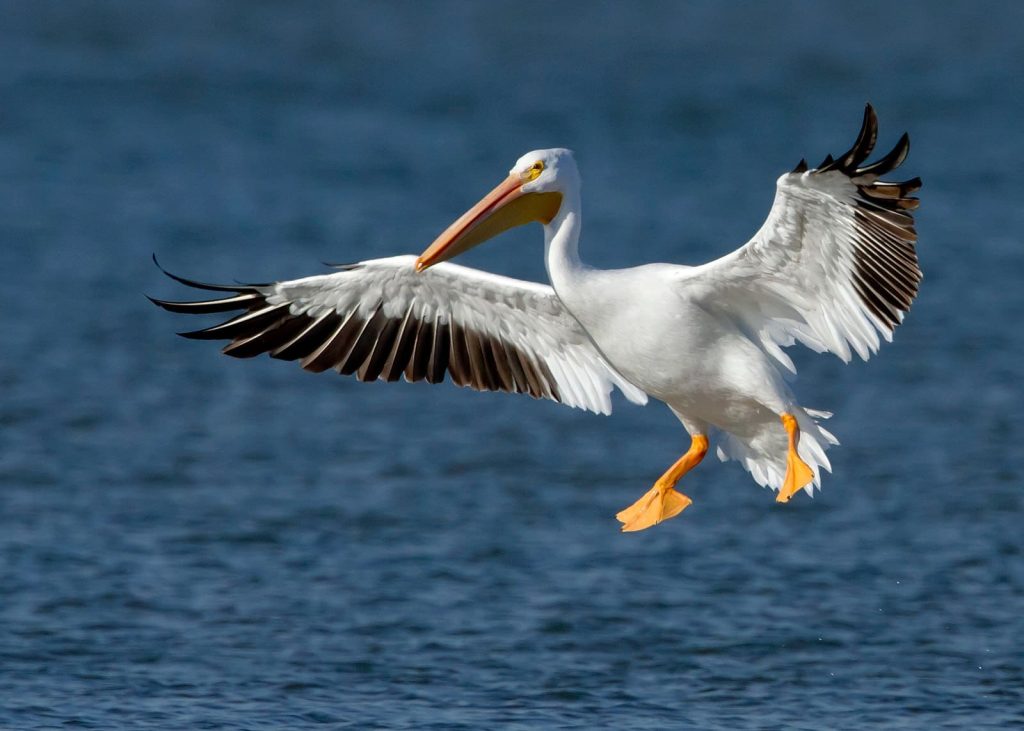
3. Cattle egret
The cattle egret is one of the most beautiful white birds in Florida that comes with a relatively small body along with brownish hair on the crown of its head and feathers that are white with a slight brown coloring. The bird species is native to African, and southern Spanish regions, however, also seen in Eurasia and North America (except for the west and far north).
Its love story thrives in regions containing wetlands, grasslands, and woodlands and avoids arid areas. It is diurnal that feeds during the day and sleeps at night. They are sociable animals that are closely associated with the grazing species and share roosting colonies with other colonial waterbirds.

4. Great egret
The Great egret is one white birds in the world that comes with beautiful white plumage. They have a long, yellow bill with black tips and long, black legs and feet. The great egret is one of the animals with long necks that are most active at dusk and dawn. The bird species is motionless in the water and waits for the prey to come close and then catches it with the help of a long, sharp bill in a fraction of a second. The natural enemies of Great egrets are raccoons, owls, and hawks, and used to attack young birds in the nest. It is also listed as one of the birds with long necks in the world.
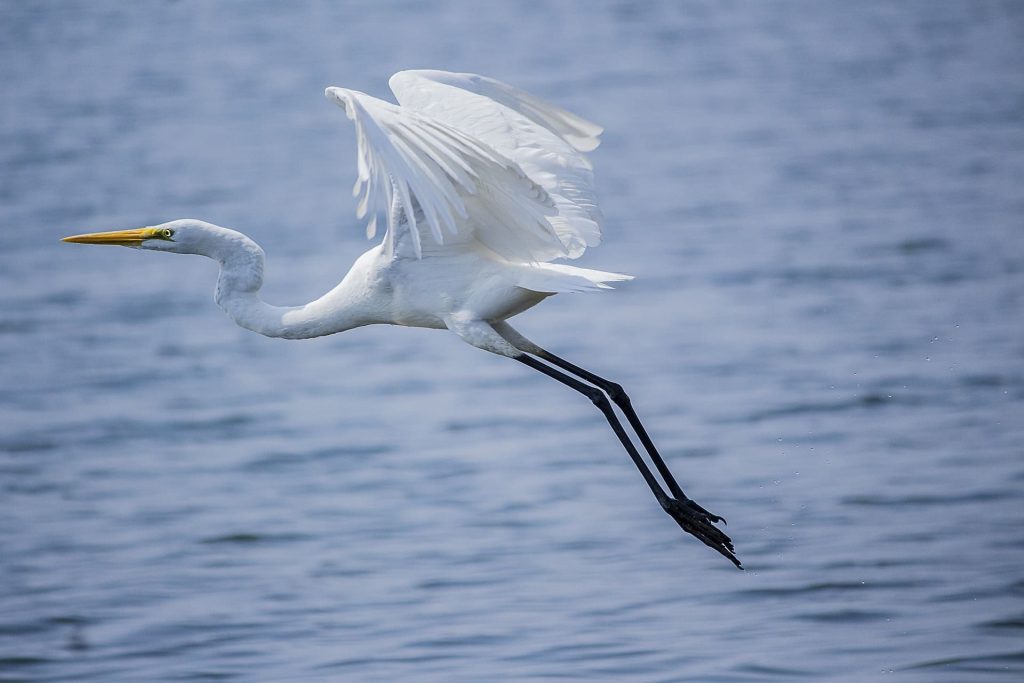
5. White Ibis
White Ibis are bird is one of the long-legged birds that live on tropical shores, marshes, mudflats, and lakes. They come with spindly legs, long necks, and long bills and tend to have down-curved bills. It primarily feeds on fishes, insects, aquatic invertebrates, small snakes, and plant matter. They prefer to nest in trees except for the hermit ibis which nests on cliffs, and the sacred ibis (Threskiornis aethiopica), which builds their nests on the ground. The juvenile white ibises are brown until maturity and sexual maturity is between 4 to 5 years.
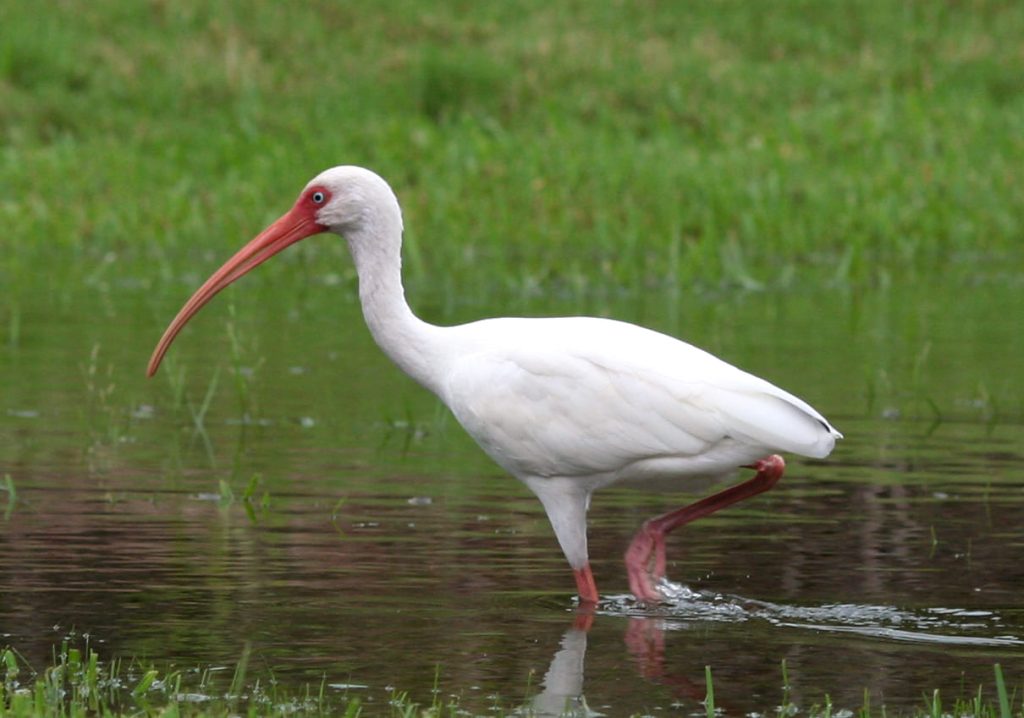
Image Source: Wikimedia
6. Tundra Swan
The tundra swan is a small swan species that lives in the Holarctic regions. The body length of a tundra swan ranges between 115 to 150 cm in length and the average weight is between 3.4 to 9.6 kg. The top speed of that bird species is upto 135 km/h and the wingspan is between 168 to 211 cm in length. The average lifespan of tundra swans is upto 25 years. The dietary habits are herbivorous and feed on grasses, sedges, and smartweeds. The swans prefer flowers, stems, tubers, roots, and also some invertebrates like shellfish.

Image Source: Chesapeake Bay Program
7. Trumpeter swan
The Trumpeter swan is a beautiful swan species found in North America. It is also the heaviest living bird native to North America and a waterfowl bird with a wingspan between 185 to 250 cm. The closest relative of the bird species is the whooper swan and some authorities consider both of the same species. The body length ranges between 138 to 165 cm and the average wieght is between 7 to 13.6 kg. The avarage lifespan of a trumpeter swan is between 24 to 33 years. It feeds primarily on aquatic plants and eats both the leaves and stems of submerged and emergent vegetation.
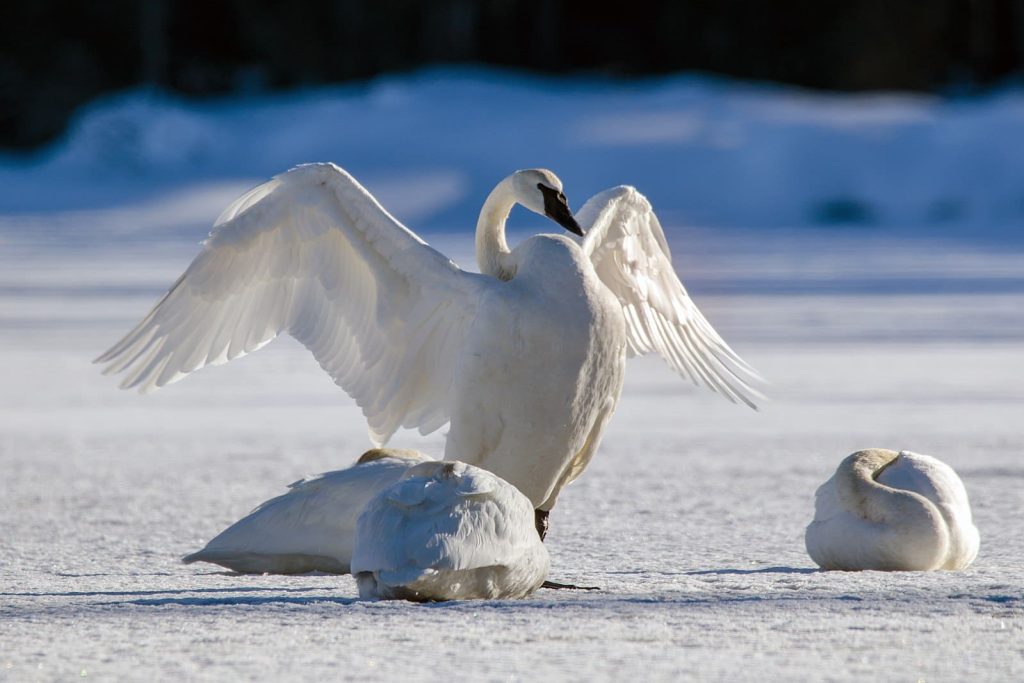
Image Source: Wikimedia
8. Snowy Owl
Snowy Owl is one of the most beautiful white birds and types of owls in Southern California that echoes its Arctic origins. The female species of the snowy owl is slightly larger than the male species. These white animals mate for life and female species lay between 3 to 11 eggs at a time and prefer to nest on the ground.
They are diurnal bird species which means they are active and hunt during the day and night, unlike other owl species. One of the winter animals lives in the Arctic regions of North America and Eurasia year-round. The primary diet includes eating mammals, ranging from small rodents to large hares. The avarage lifespan of snowy owls is upto 9.5 years in the wild.
Also Read: 10 Types Of Owls in Illinois
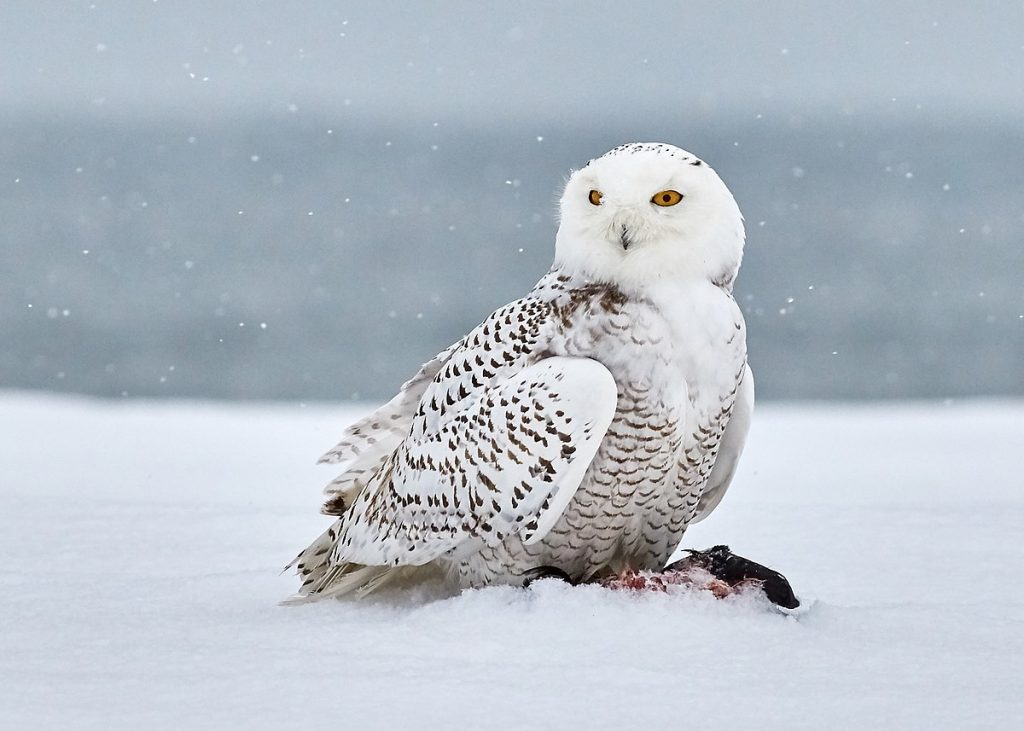
9. Snow Bunting
The snow bunting is a beautiful white bird that belongs to the family Calcariidae. The body length of snow bunting is upto 15 cm in length and the average weight is between 30 to 40 grams. The breeding range of snow bunting is throughout the northern hemisphere. The bird species are named after the Arctic and snowy winter fields and also known as snowflakes.
The flock of snow bunting looks like snowflakes, swirling through the air and settling on winter fields. The avarage lifespan of snow bunting is upto 8.9 years in the wild. The dietary habits are omnivores in nature and feed on seeds, the buds of leaves, and insects. The young ones feed on arthropods that are both insects and arachnids.
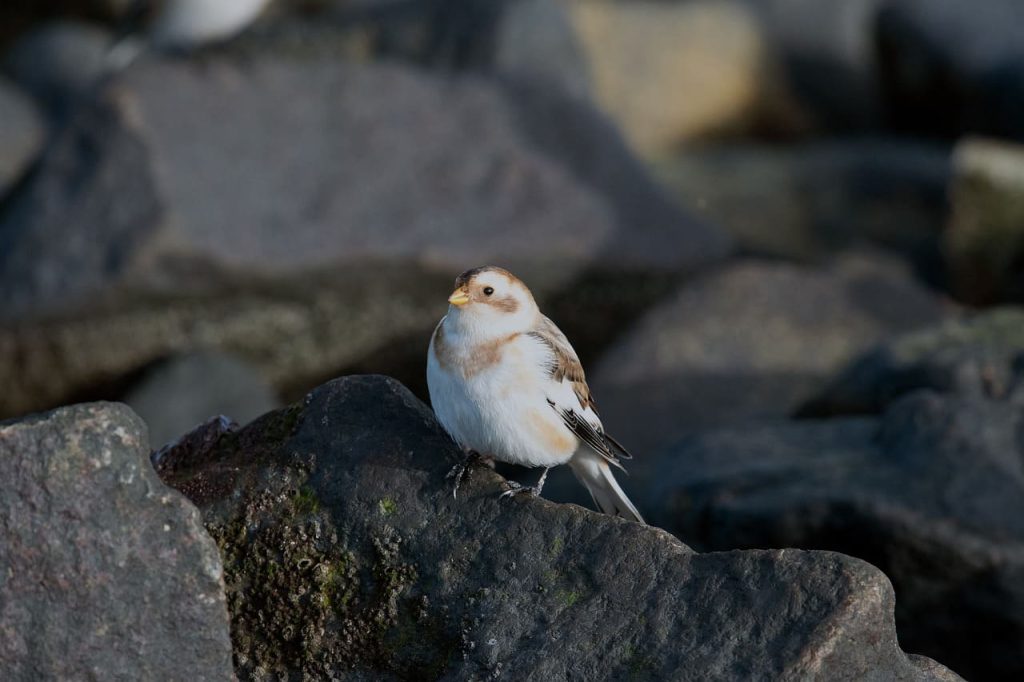
10. Snowy Egret
The Snowy egret is a small white heron that looks very similar to the Old World Little egret that was established in the Bahamas. The body length of bird species is between 56 to 66 cm in length and the average weight is upto 370 grams.
The bird is entirely white making it one of the most amazing white birds in the world along with yellow lores between the long black bills and the eye, black legs, and bright yellow feet. They are native to North, Central, and South America. The dietary habits are carnivorous and feed on fish, crustaceans, insects, small reptiles, snails, frogs, worms, and crayfish. The avarage lifespan of a snowy egret is upto 22 years.
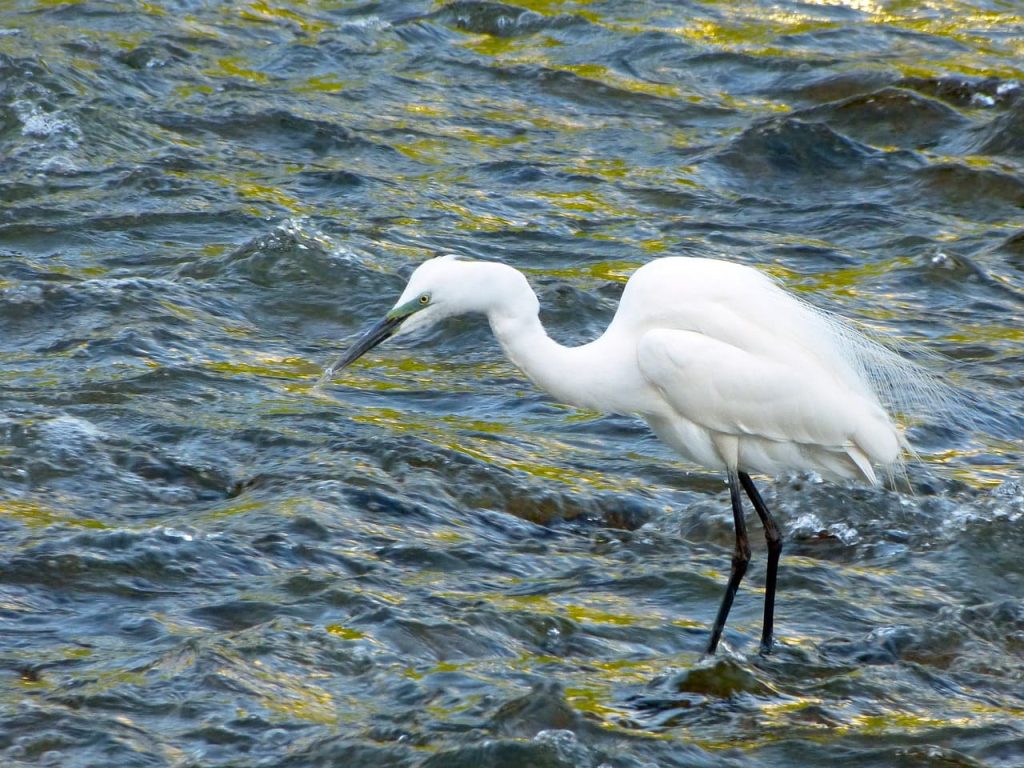
11. White Tern
White Tern is one of the beautiful white animals also known as angel tern and white noddy in English. Talking bout appearance, they have a white plumage, and their eyes are surrounded by black rings making them seem much larger. Both adults look the same, however, juveniles have a brownish-gray back and gray on their necks and have a black mark behind their eyes. The bird species breed in subtropical and tropical South Atlantic, Pacific, and Indian Oceans. The dietary habit is carnivores in nature and feeds on small fish squid, and sometimes crustaceans.

12. Ivory Gull
The ivory gull scientific name is Pagophila eburnea which belongs to the family Laridae. The body length is between 40 to 43 cm in length and the average weight is between 448 to 687 grams. The bird species breeds in the high Arctic and has a circumpolar distribution through Greenland, northernmost North America, and Eurasia. The avarage lifespan of Ivory gull is between 10 to 20 years in the wild. The dietary habit is carnivores, piscivores in nature, and breeds on crustaceans, rodents, eggs, and small chicks. They can be easily identified with the help of pure white plumage.
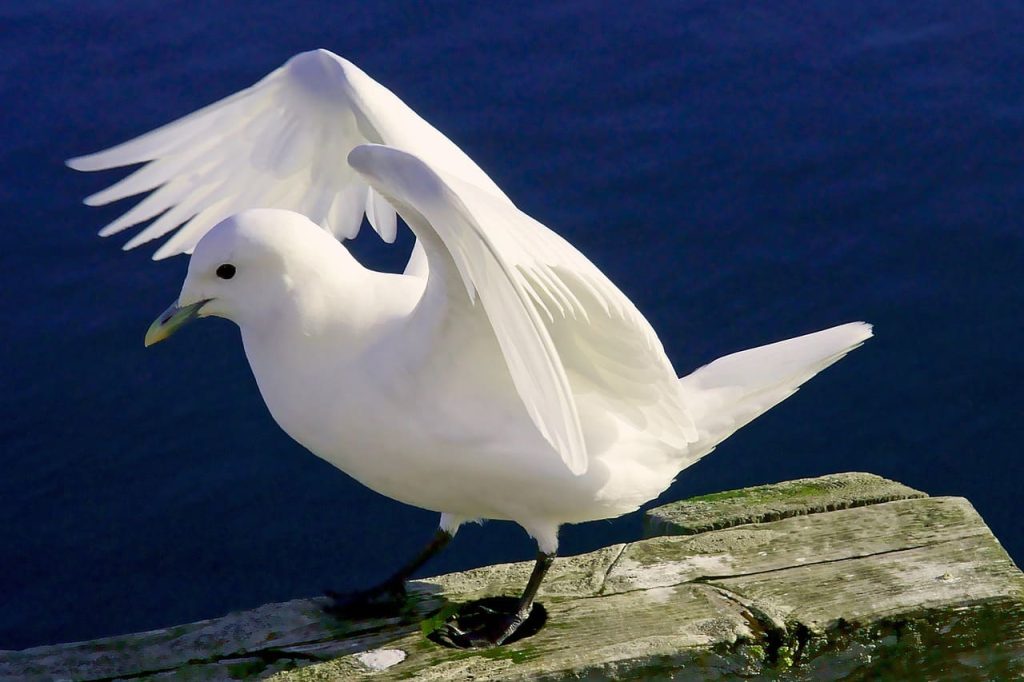
13. Snow Goose
Snow Goose is one of the popular birds of New England that use different vocalizations to communicate about territory issues and other issues among its offspring and mates. These bird species are very noisy and can be heard more than a mile away. It used to fly both night and day and tend to go back to the same nesting year after year. The population of snow geese is good, however, the main threat is from hunting, despite restrictions to protect them from overhunting.
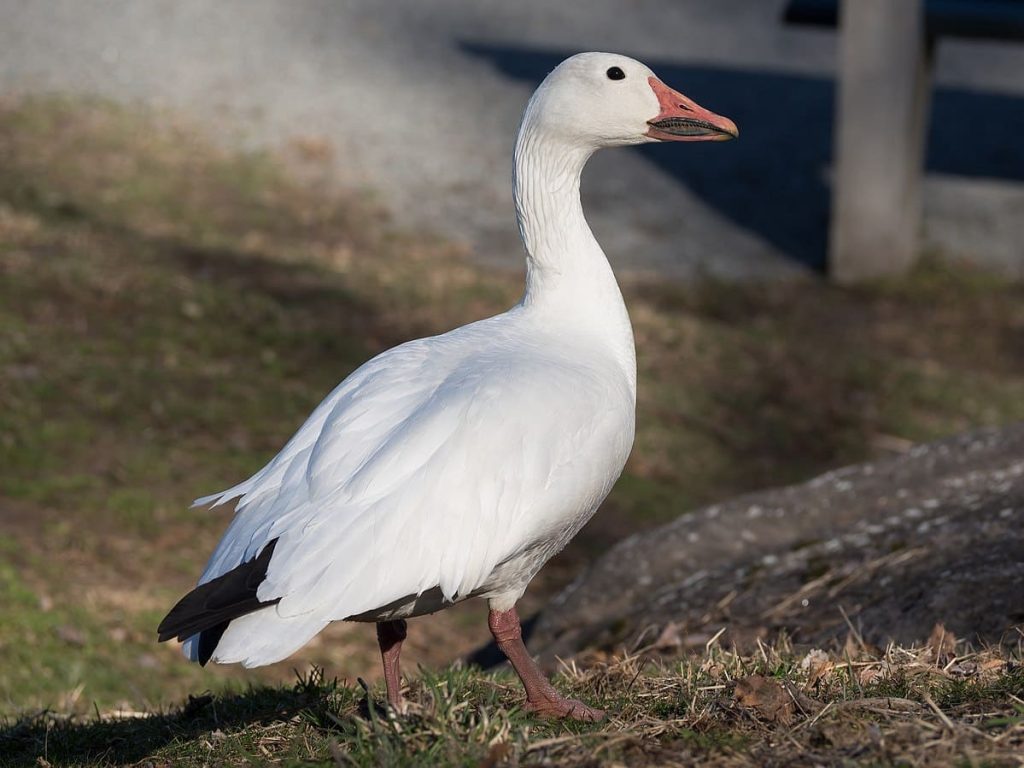
14. Whooping Crane
Whooping Crane is one of the most amazing white birds in the world and on average, it is the fifth largest extant species of crane in the world. These long-legged birds move mainly by walking or flying. During flight, they are seen flapping, gliding, or soaring, depending on the nature of the flight. The main form of communication among the bird species is vocal communication and the calls can be an indication to deter predators, warn of attack, protect and care for the young, and locate other birds within the species. The popular white bird of Florida forms pairs for life and hence monogamous.
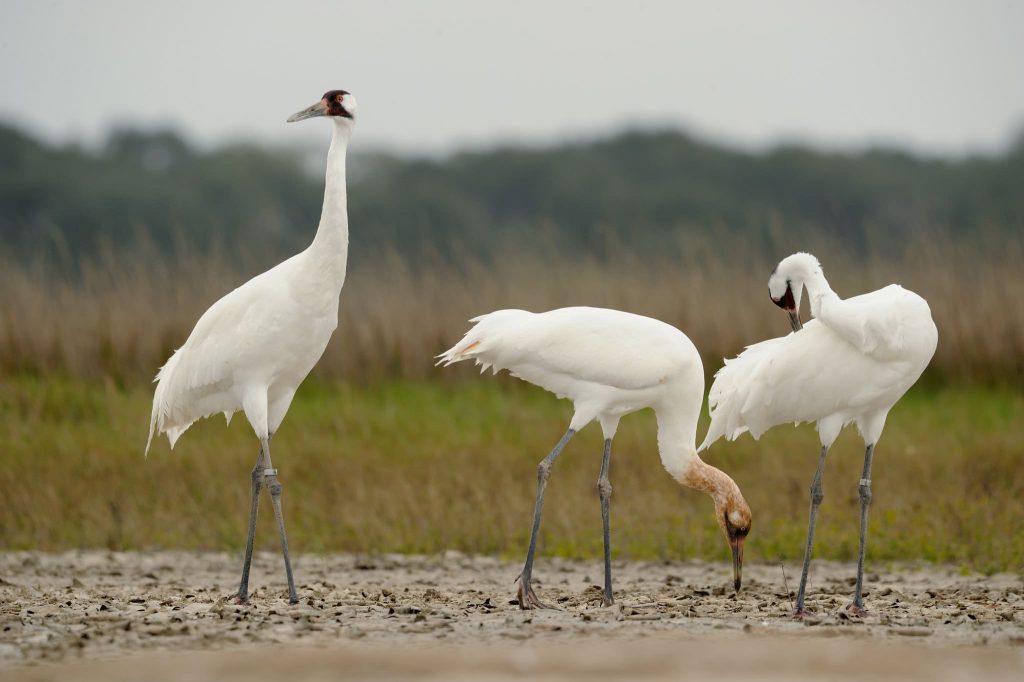
15. Smew Ducks
Smew is one of the black and white ducks in the world and the only living member of the genus Mergellus. Talking about the appearance, they look black-and-white in flight and sometimes people get confused with the ruddy duck, however, they are known as “redhead” smew. These Japanese bird species breeds in the regions of the northern taiga of Europe and the Palearctic. They have a hooked tip and serrated edges, which help it catch fish when it dives for them. The avarage lifespan of smew ducks is between 1 to 8 years in the wild.
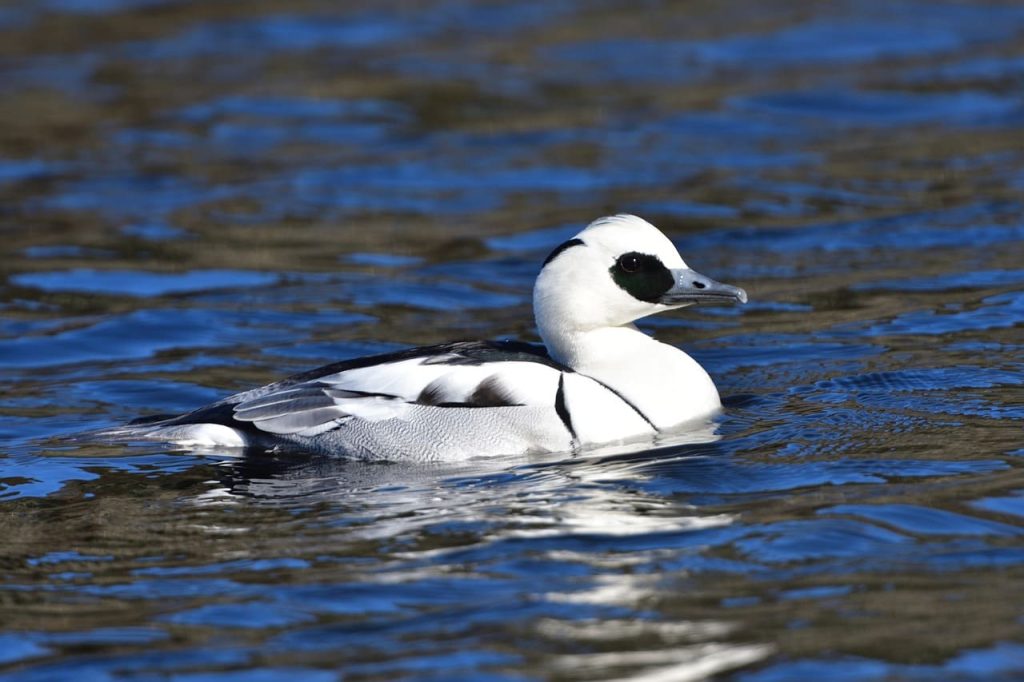
16. White-bellied Sea Eagle
The White-bellied Sea Eagle’s scientific name is Haliaeetus leucogaster and was originally described by Johann Friedrich Gmelin in 1788. The bird species is closely related to the Sanford’s sea eagle of the Solomon Islands and is considered a superspecies. The primary diet includes fish, turtles, and sea snakes, but they will also take birds, such as little penguins, Eurasian coots, and shearwaters, and mammals (including flying foxes) as well. The population of these bird species has declined in parts of southeast Asia such as Thailand, and southeastern Australia. The avarage lifespan of a White-bellied Sea Eagle is upto 30 years in the wild.

These are some of the most beautiful white birds in the world. Kindly share and post your comments.
